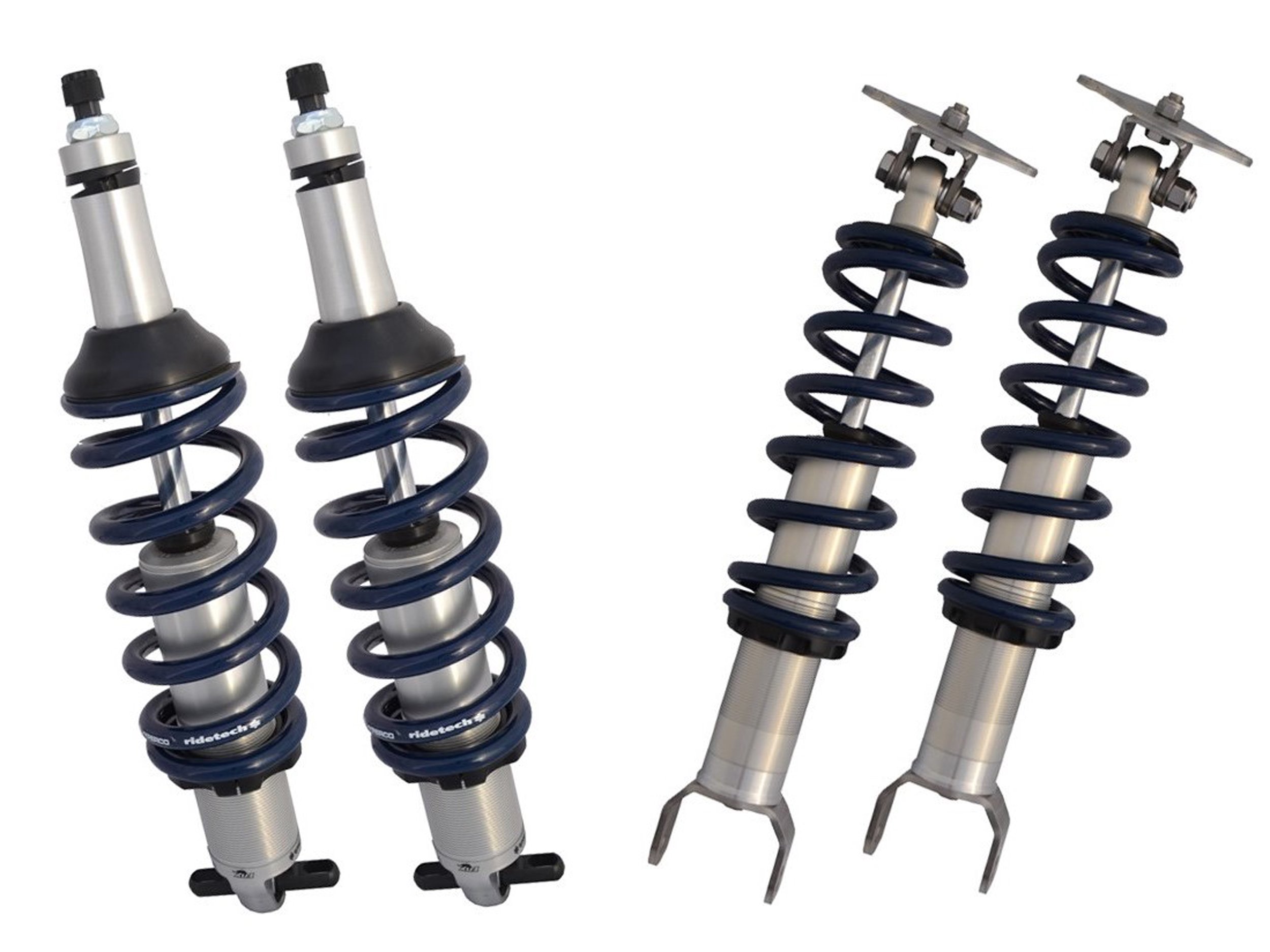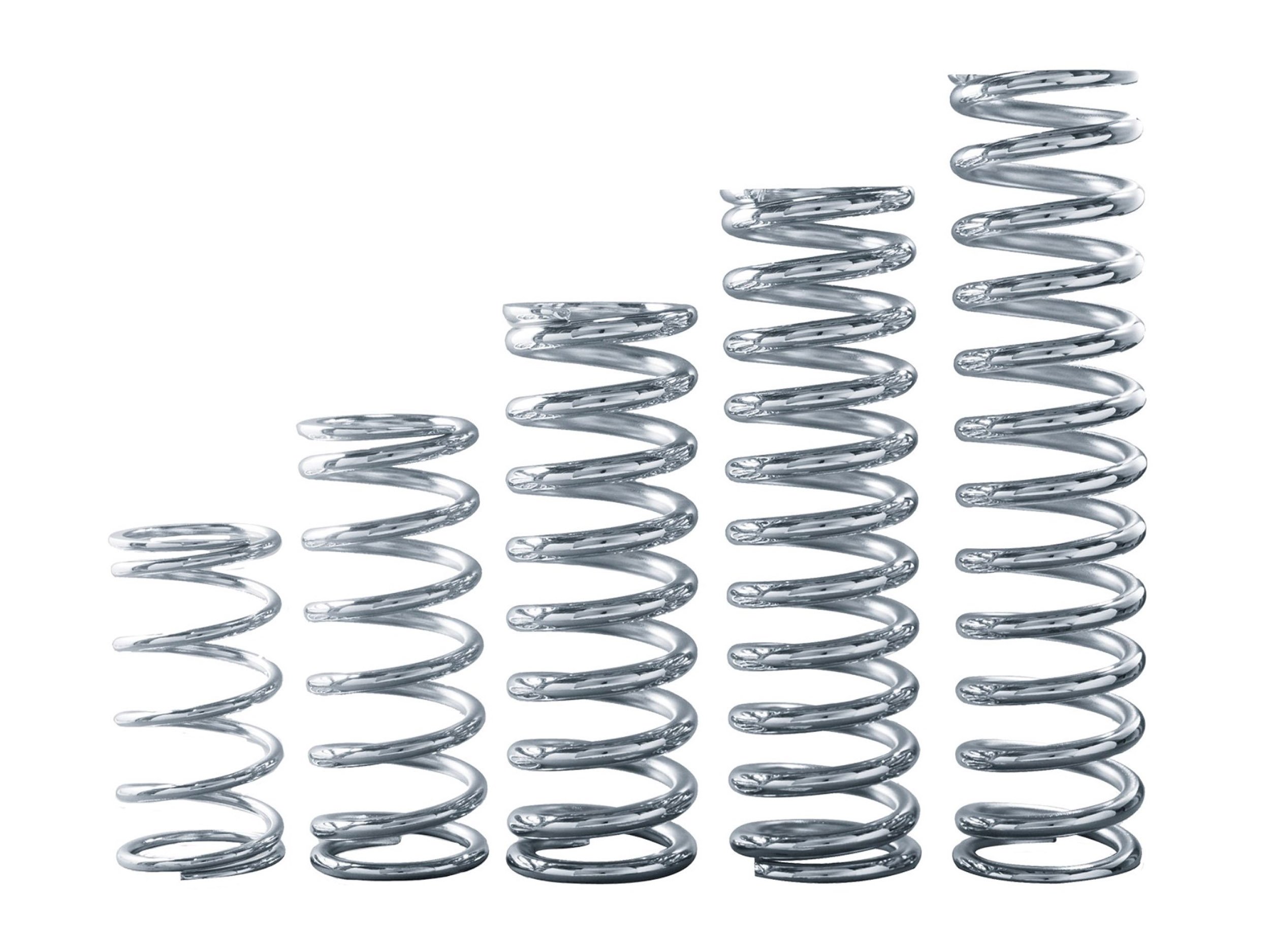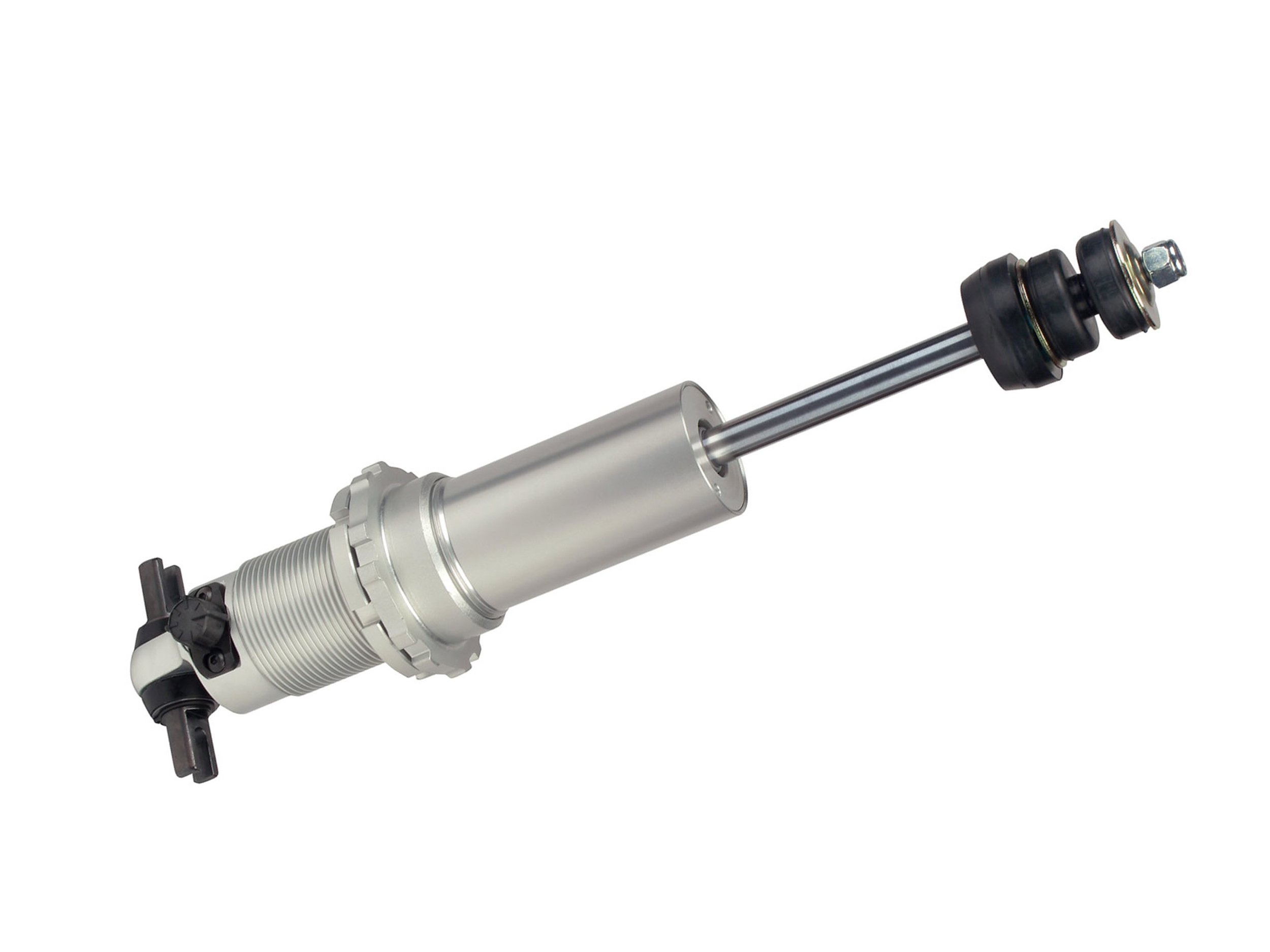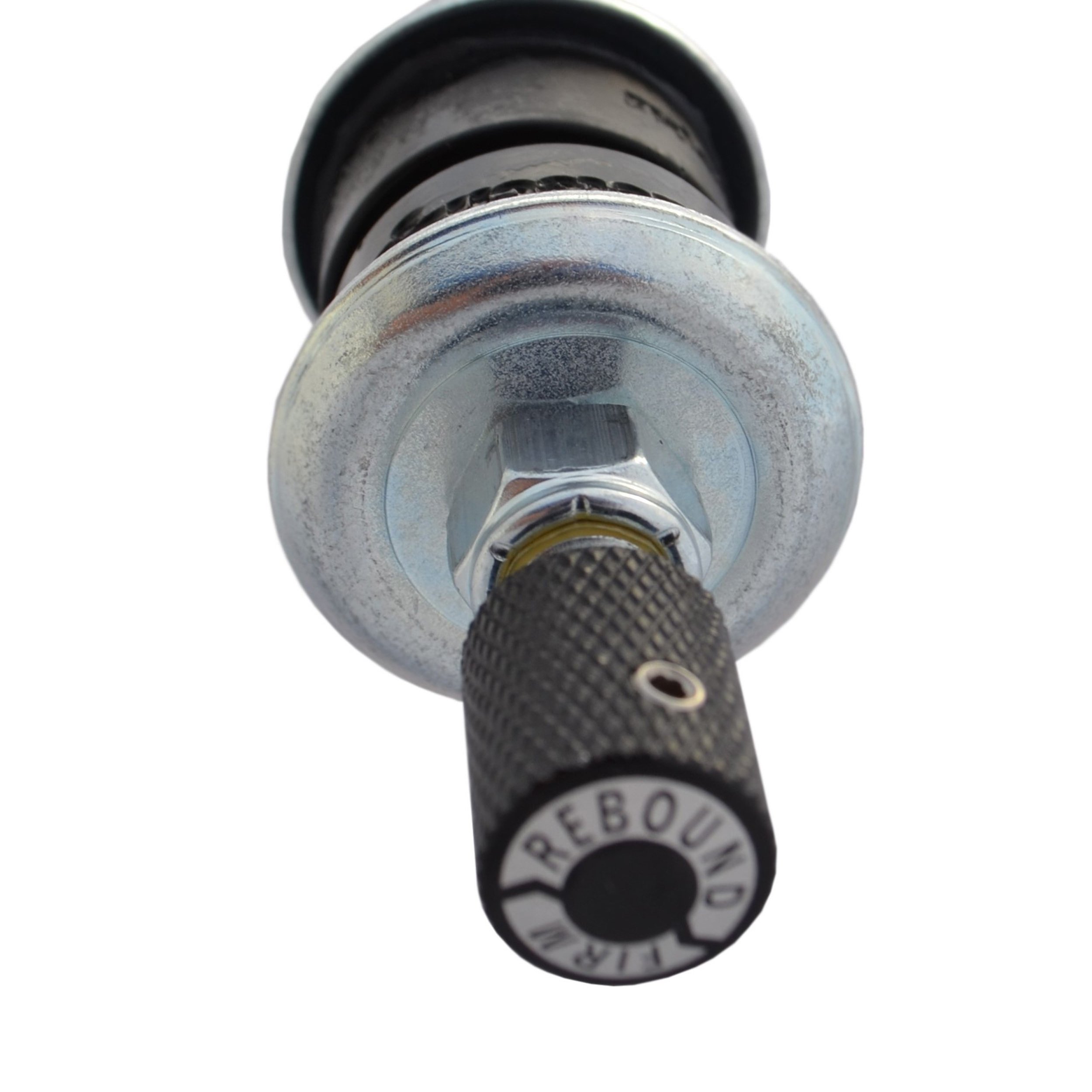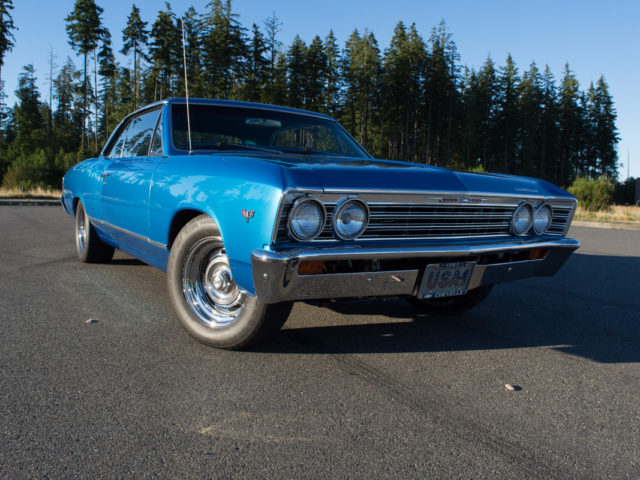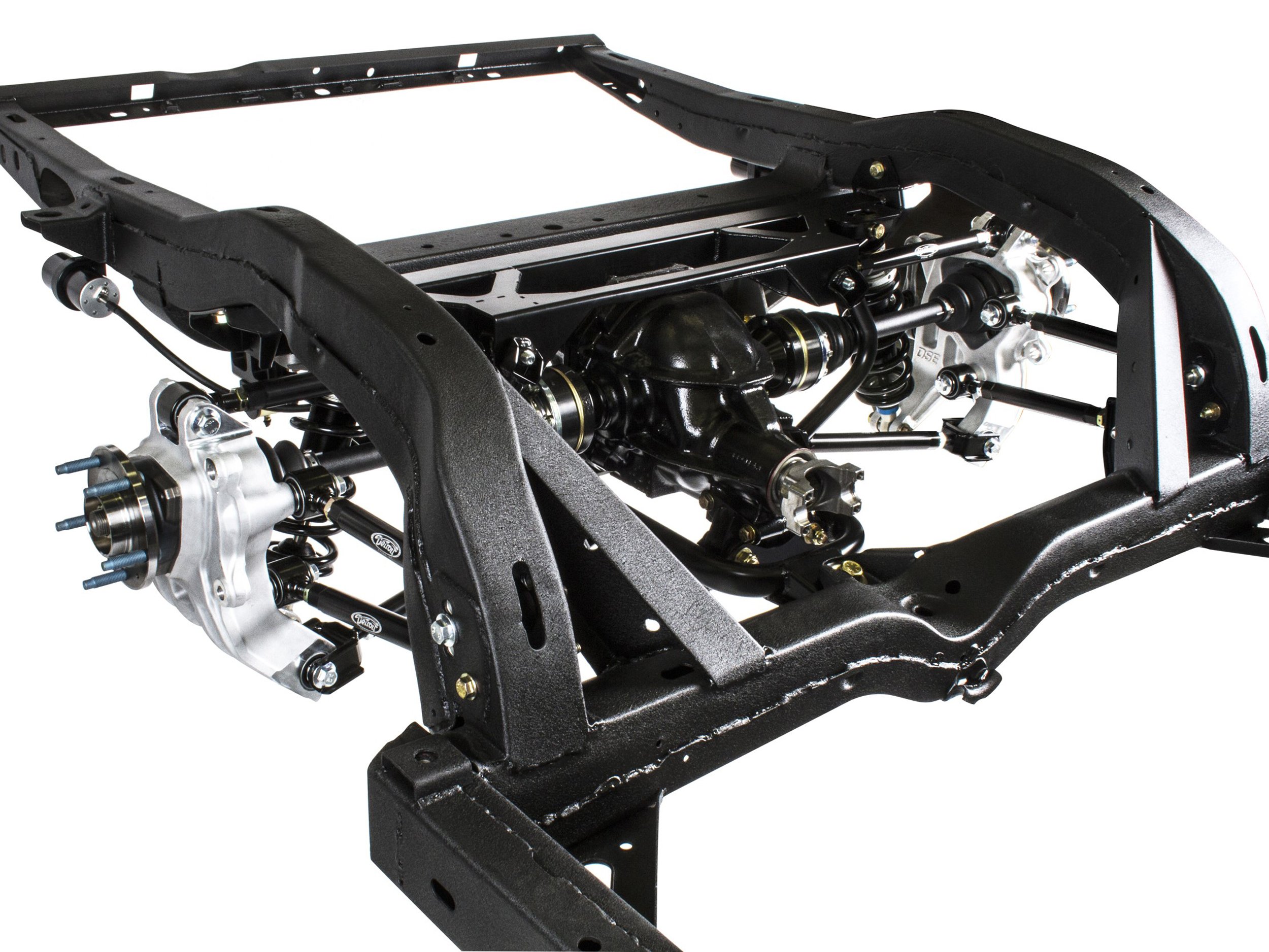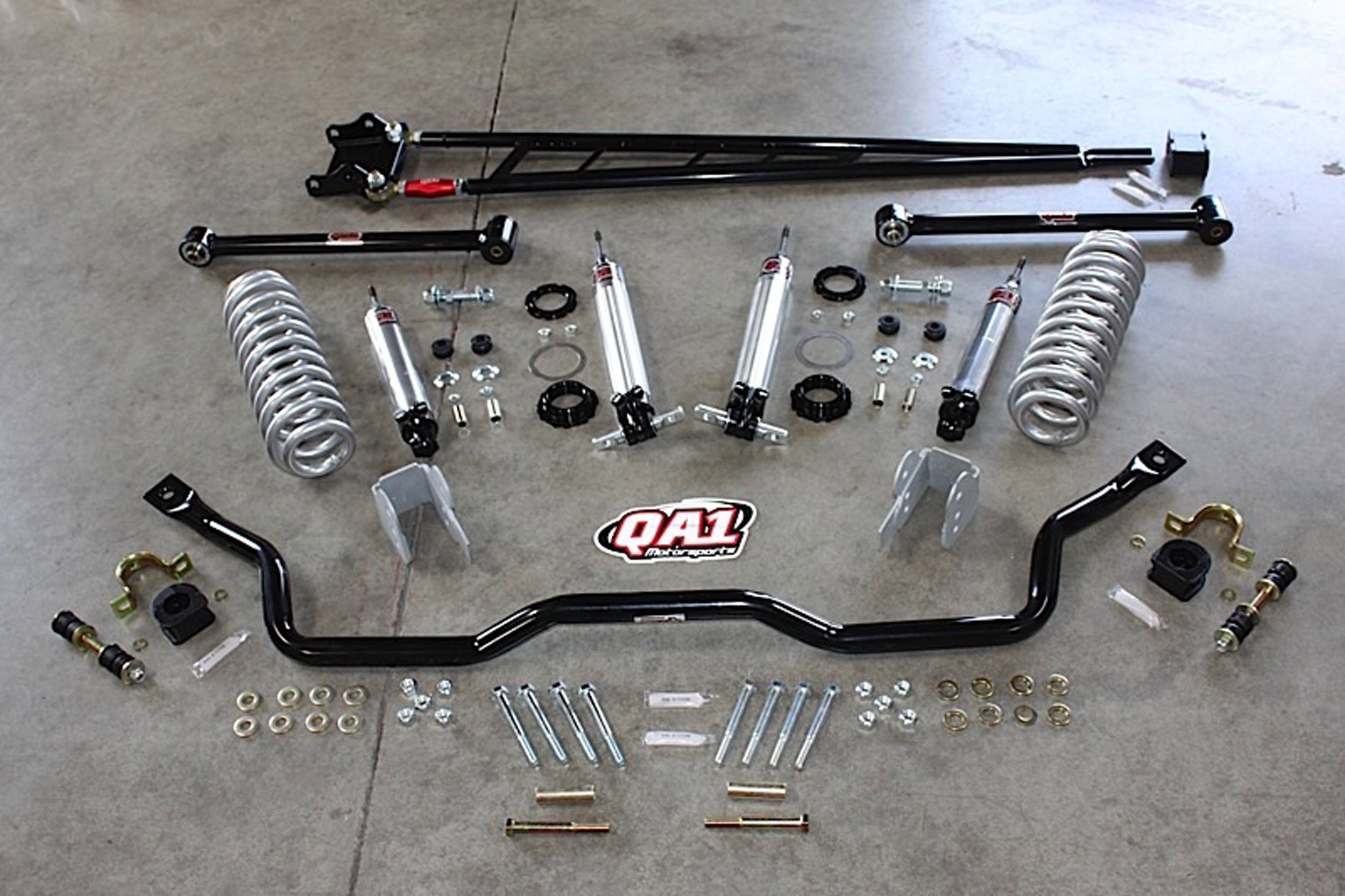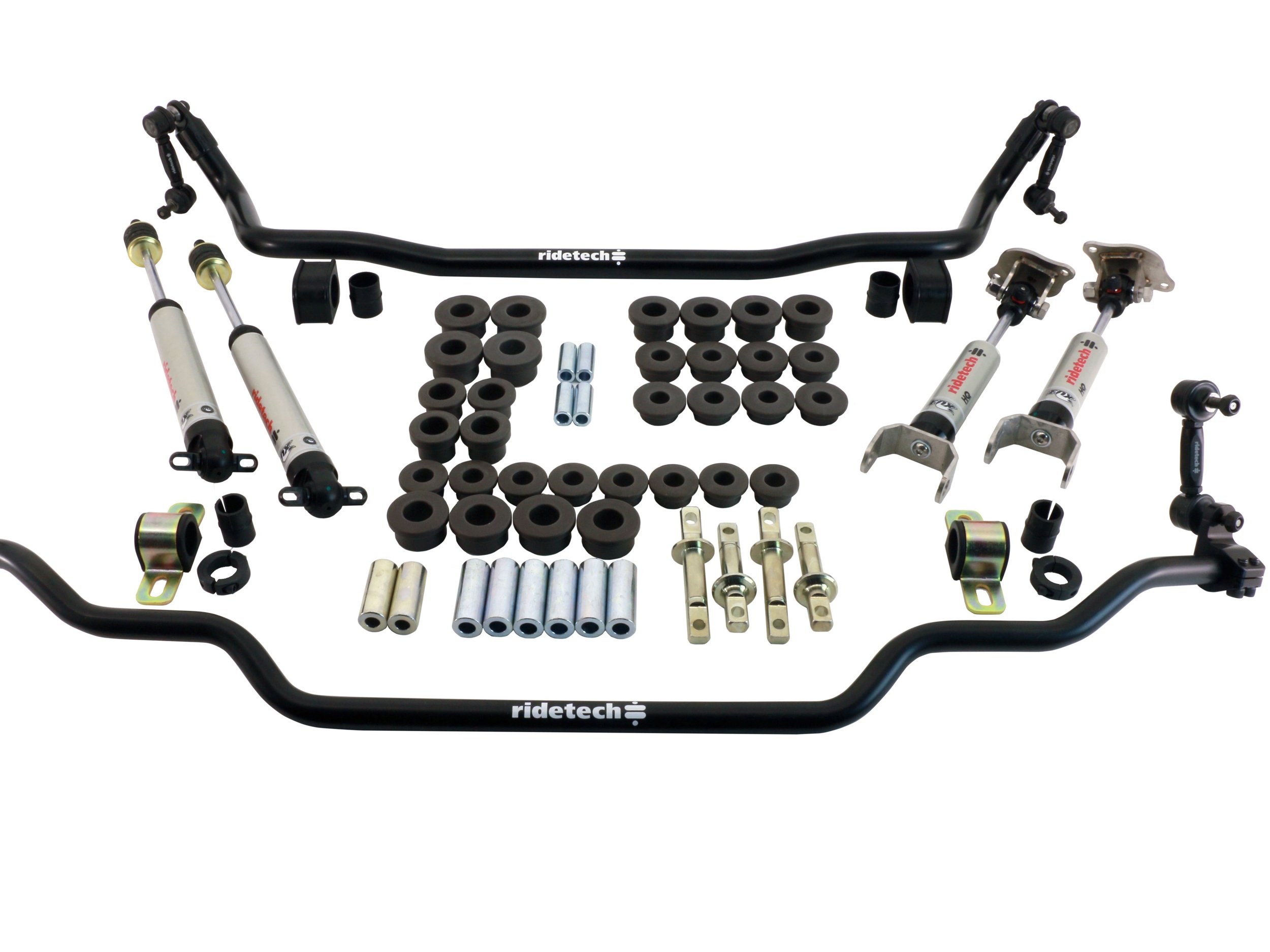There are so many options when modifying classics today. The appearance, performance, and handling of our cars is very personal. Each aspect is usually tailored to the owner’s tastes and how they intend to use their automobile. One of the most subjective elements, which also has perhaps the broadest scope of available options, has to do with how the car handles and its ride characteristics.
Go back a decade or more, and every change to how a car handled was done using jacks, wrenches, and various-sized bolts and nuts. Today, suspending our rides has enjoyed an explosion of options that include everything from springs (both flat and wound wire), composite fixtures, and even air itself! The adjustability and various means of ride selection can be overwhelming. To help bring some clarity to one of the most popular ways to set up a car’s ride height, we reached out to Detroit Speed, Heidts, and QA1 to take a look at the time-proven coilover shock system.
Coilover Shocks
Just as the name implies, a coilover consists of a coil spring wrapped and secured around a shock absorber. The spring bears the weight of the car, and the shock helps control the undulations of the car’s suspension as it reacts to various road irregularities and G-forces. While that is an over-simplified explanation of what coilover shocks do, it basically contains most of the considerations for deciding which coilover system to use, and what other components it may suit best.
Coilover shocks may feature a captured spring or have the spring rest in a pocket in the frame or a specially-designed mount. Adjustability can range from single-, double-, or triple-adjustable styles.
For many of today’s coilover shocks, one of the benefits is the ability to fine-tune the shock’s performance in various situations. Today’s shocks have an almost-dizzying array of single-, double-, and triple-adjustable parameters to fine-tune a suspension.
Shrouding a shock with a coil spring has been done for decades. Sometimes, the coil was a supplement for the additional loads the vehicle was expected to bear and did not hold the full weight of the car. At some point, coilover shocks became the primary ride-giver, and the vehicle’s ride could be tuned by swapping in heavier or lighter springs. Many times, the vehicle’s ride height could also be adjusted by raising or lowering the spring’s lower mounting point on the shock’s body. Tuning had begun!
The coil springs that shroud coilover shocks can be swapped out for various types and spring rates. The bottom retainer for the spring is typically threaded to allow adjustment of the car's ride height.
It didn’t take long for adjustable shocks to find themselves wrapped in coil springs, and the world of performance tuning was underway. Now, compression, rebound, and even the shock’s short-game was a tool in a tuner’s pocket. But, just because you have a hammer doesn’t mean you always need to use it. We asked Alex Stivaletti at Detroit Speed about each of these options and who might benefit most from each one.
“A customer that is mainly using their vehicle for street driving would best be suited for the single-adjustable shock,” he says. “The valving of the shock can be easily adjusted to stiffen or soften the ride quality by turning a knob. This gives the customer some adjustment to how the vehicle will handle.
“If a customer plans on doing any kind of autocross, they would be better suited to select a double- or triple- adjustable shock, depending on how much the vehicle will be used for competition driving. These shocks should come with a dyno sheet so you can adjust the low- and high-speed rebound/compression to get the most out of the vehicle on the track.”
Beyond simply the way the car is to be used, the type of car and the its suspension will also dictate how much control is needed through the tuning dials of the shocks. Cars with softer suspensions that communicate well through the vehicle, don’t typically benefit from over-controlling through the shocks.
On the other side of the coin, other vehicles — those whose suspensions weren’t initially designed for performance — can often be reigned-in by selecting the proper settings. Knowing your car’s starting characteristics is just as important as being honest about the car and your expectations of it.
The Third Dimension
Most everyone knows the primary purpose of a shock, and most enthusiasts have a working knowledge of what the term single- and double-adjustable shock mean, but what is this third option when choosing to tune shocks. For those who don’t know (and those who won’t admit it), let’s take a look at each option and see what it brings to the table.
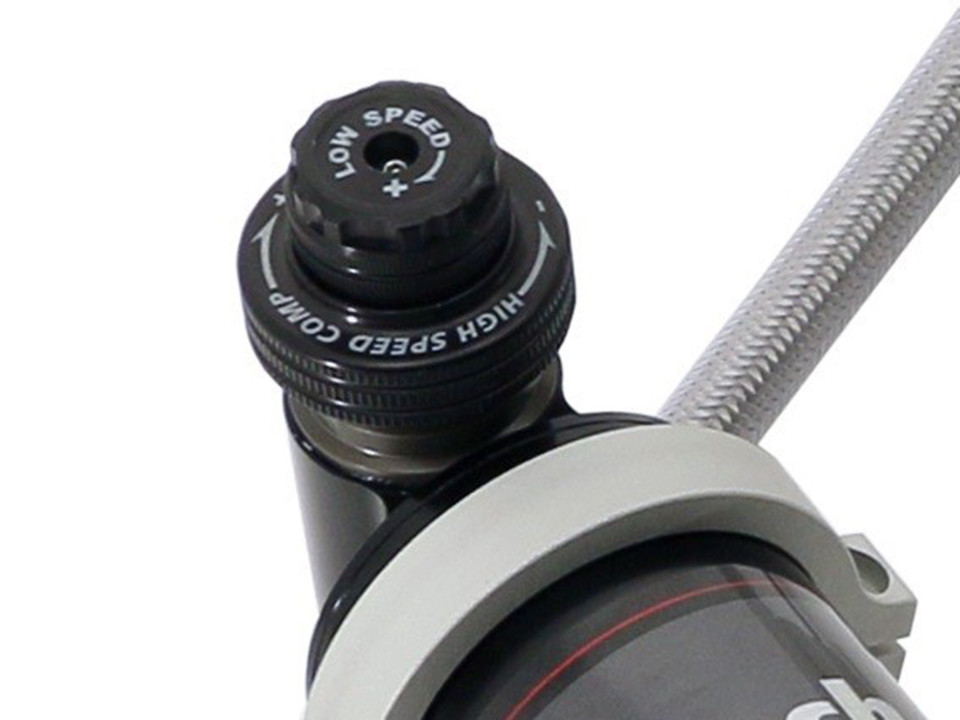
A triple-adjustable shock features a way to adjust the low-speed flow of fluid throughout the shock’s mechanism. This is typically reserved for the most discriminating racers.
Single-adjustable shocks adjust the overall ride quality of the vehicle by controlling how compliant the car’s suspension is to bumps in the road. That is done by softening or firming the compression of the shock, or how quickly the shock becomes shorter. Think of it this way; a softer shock setting will allow the wheel to move up into the wheelhouse more, so the suspension absorbs more of the transition force. If the shock is less compliant (firmer), the change in direction is directly transferred to the car and its passenger’s bodies.
A double-adjustable shock not only adjusts the compression of the shock but also, the shock’s rebound, as it expands. This is helpful for those trying to complement the compression characteristics of the shock on the opposing side of the vehicle. Even though each shock operates separately from the other three, both its compression and rebound characteristics can significantly affect how the car handles.
When you accelerate forward, the rear shocks compress and the front shocks expand. The reverse is true when braking. When you turn the car, the rebound/compression connection becomes this compound relationship that dances around the car’s center of gravity. Tuning for each of these parameters will help keep each tire’s contact patch optimized for the type of driving experienced.
There are many different styles of adjustment knobs. One main concern is being able to get to the knob to make adjustments without removing the shock from the car.
A triple-adjustable shock kicks tunability up a notch by being able to adjust the shock’s low-speed reaction to oscillations in the chassis. While it may seem like delving into the quantum physics of shock tuning, the concept is best explained by QA1’s Tim Anderson. “On a triple-adjustable shock, there are high-speed adjusters for both compression and rebound, as well as a third, low-speed adjustment, otherwise known as bleed adjustment.”
Tim goes on to explain, “The low-speed adjustments can independently adjust compression, independently adjust rebound, or can adjust both compression and rebound simultaneously, depending on the internal design. High-speed adjusters such as compression and rebound, are your main adjustments, which are most effective when tuning. The low-speed adjustments are typically a needle-jet design that bypasses oil from the high-speed adjusters and tunes the slower shock movements for fine-tuning.”
The MOD Shock
Just when you thought tunability had reached its peak, QA1 introduced the MOD Shock. It’s an even more tunable shock system that easily broadens the shock’s operating parameters beyond what even an adjustable shock can afford. QA1’s Tim Anderson goes into more detail about how the MOD shock brings shock tuning to a whole new level.
“With conventional adjustable shocks, once the range of adjustment is maxed out, you need to send the shock into a rebuilder to internally re-valve the shock to achieve the desired range of adjustment that will work for your vehicle,” he says. “With the MOD Series’ Quick Tune technology, you can change a valve pack in minutes with the shock still on the vehicle, allowing you to ultimately tune your car faster.
“QA1’s MOD Series shocks have limitless high-speed adjustments with interchangeable valve packs, as well as low-speed bleed adjustments for both compression and rebound. The valve packs provide a wide range of adjustment. The adjuster knob allows you to set the damping force within the 24 clicks of that particular valve pack, and the low-speed adjustment allows you to fine-tune your damping force.”
Where Do I Fit In?
If you are even considering a triple-adjustable shock, you should already be beyond the scope of this story and are likely the envy of many. For the rest of us within the bulge of the bell curve, our choices range between single-, double-, and non-adjustable coilovers.
A coilover-upgrade kit could range from a set of coilovers and the necessary brackets to a full-on suspension upgrade that bolts onto your existing frame.
Some suspension kits come with coilover shocks already tuned for the intended application. While that doesn’t mean there isn’t room for improvement, many times, the manufacturer has worked out much of the tuning requirements. A quick call to the tech line will address any of the details, so you get the best ride and handling for your application.
Heidts’ Scott Diedrich explains, “Our single-adjustable coilover shocks are standard and more than enough for the normal driver and weekend cruiser. They are easier to set up compared to a double- or triple-adjustable shock. Our double-adjustable shocks are options on the PRO-G IRS and IFS kits, and are geared more toward the driver who may participate in autocross racing or road courses as well as street driving.
“Springs can easily be changed for the street or different tracks to offer the best tuning for each situation. We’ve just started getting more into the triple-adjustable shocks on our PRO-G kits as the top-tier upgrade, mostly used by serious racers. They can be a little more complicated to set up for a novice, but definitely work better for an experienced user on the track.”
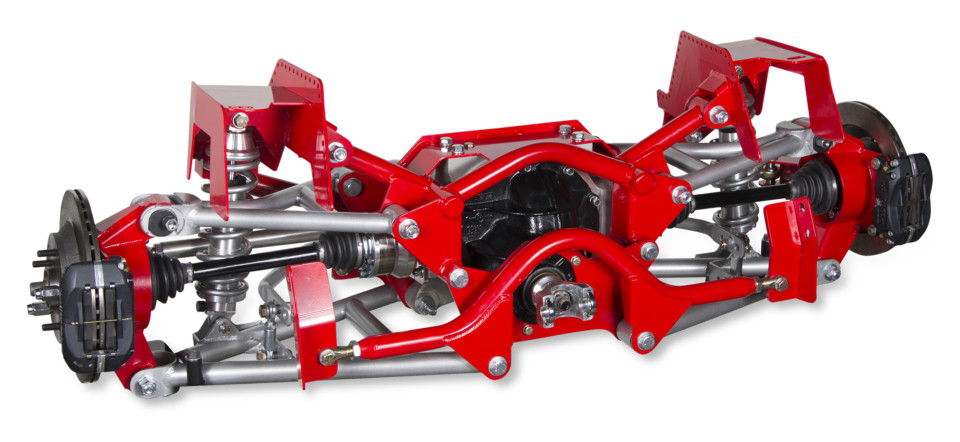
This Heidts PRO-G IRS is designed to bolt into the existing frame. A benefit of this type of upgrade is that all of the suspension’s geometry has been optimized for better handling and ride quality.
Many manufacturers offer coilover-upgrade kits that include the shocks as well as the mounting hardware to mate them to the vehicle. They also offer upgrades or options including different spring rates, single-, double-, or triple-adjustable versions, and as mentioned in QA1’s case, its MOD shocks’ infinite tuning.
Coilover Complications
With great power comes responsibility, and setting up a great handling suspension is no different. Beyond simply choosing the number of adjustments, you also need to look at the entire suspension as a system. You cannot expect a great performing set of shocks to overcome loose or worn bushings, or improper suspension settings. If your geometry isn’t correct and stable, no shock in the world can correct it.
Detroit Speed’s Stivaletti lays down an all-too-common issue. “Many customers have worn-out shocks and springs, so they tend to replace those first,” he says. “Then, they will replace parts like the sway bar or wheels/tires when they have more budget for upgrades. If budget isn’t a concern, it makes sense to do shocks, springs, and bars all together since they work as a system.
“When updating your suspension, we feel tubular control arms will give you more bang for your buck. With Detroit Speed control arms, we have corrected the caster and camber curves to allow your vehicle to handle much better than with the stock control arms. It really just depends on budget and what upgrading the vehicle needs first.”
Also, jumping directly into the deep end of the pool can create its own problems. Heidts’ Diedrich explains how adjustability can be detrimental, “Unfortunately, people try to adjust the ride height too much by using a coilover,” he tells us. “Purchasing the correct length shocks is a must. Bottoming out the shock adjustment to get a vehicle lower will only damage the shock and make for a horrible ride. Likewise, adjusting the shock so that it’s at its highest level won’t provide a good-ride quality.”
When upgrading your suspension, don't forget items like the bushings. More comprehensive kits (such as these) upgrade the bushings with urethane units and add to the value by utilizing sway bars engineered to match the spring and shock settings.
Having a myriad of choices can also have you chasing your tail. Diedrich has seen this issue as well. “Single-adjustable shocks are an easy setup for a novice user once you level the lower control arms to set the ride height,” he explains. “Only then can you start to dial in the ride quality. We’ve seen issues in the past with dialing-in a smooth ride from double- and triple-adjustable shocks with users that aren’t familiar with them. It can be trial and error at the beginning. But, with good notes being taken of changes made to the shocks and the results that were realized, you can dial-in the settings that work best for you.”
The Bottom Line
Coilover shocks offer various levels of tunability to your ride, but a solid understanding of their purpose and realistic expectations are the gateways to making the most of their abilities. Having more options is never a bad thing — if you understand what needs changing, and why.
Whether purchasing an entire chassis, installing a kit, or even just upgrading the shocks and springs on your current ride, take your time and make sure you get the best value for your hard-earned money. In the end, you’ll be much more satisfied with your purchase, and likely enjoy driving your car more. We see that as a win, driving our cars was the goal of such an upgrade in the first place!



